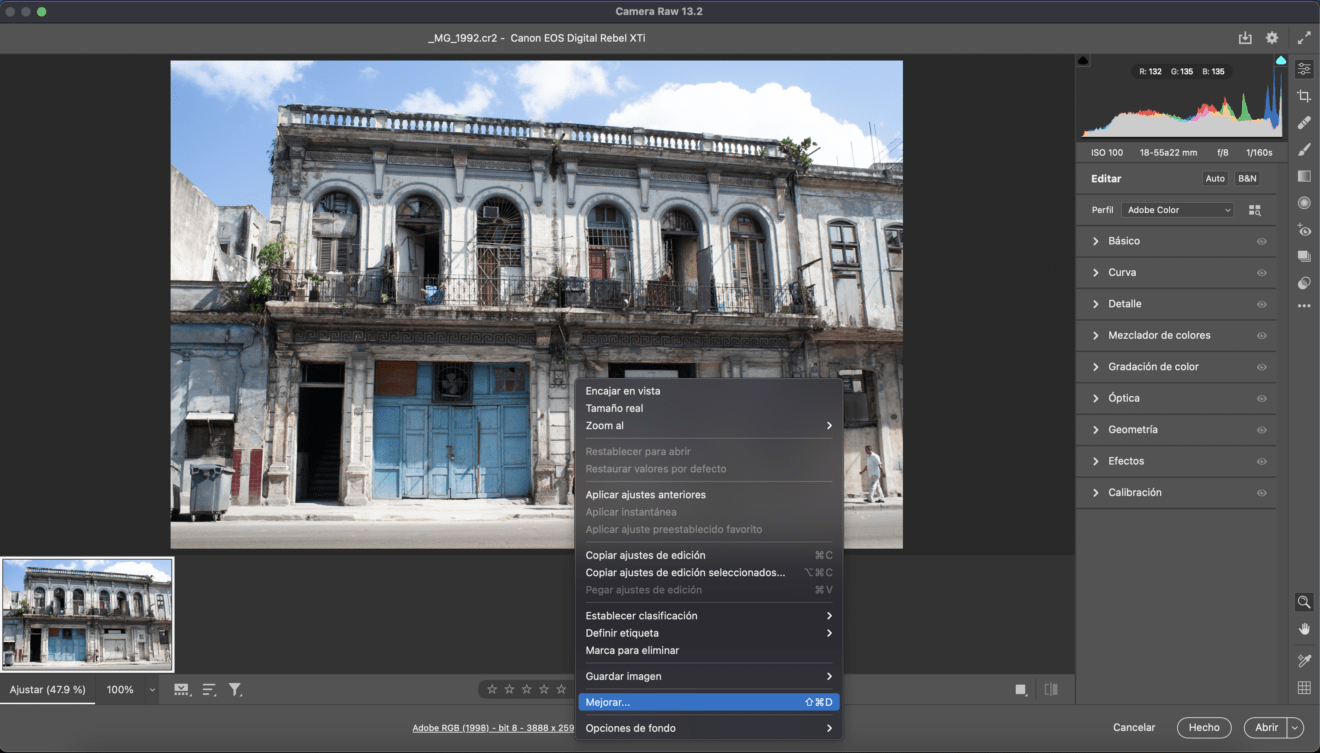


- Adobe adobe camera raw super aischneiderpetapixel upgrade#
- Adobe adobe camera raw super aischneiderpetapixel tv#
If the highlights are merrily flashing and the shadows are still banked up against the left-hand wall of the histogram, the solution is to increase the amount of fill light, i.e. The popular term for this peculiar behavior is called 'exposing right'.

When the flashing highlights start to appear you can still add around one extra stop to the exposure before the highlights can no longer be recovered in Adobe Camera Raw. Increase the exposure using the exposure compensation dial on the camera until you see the flashing highlights.
Adobe adobe camera raw super aischneiderpetapixel tv#
So if your model is not in a hurry (mine is watching a half-hour TV show) you can take an initial exposure on Auto and then check your camera for overexposure. With a little knowledge and some attention to the camera's histogram during the capture stage, you can master the art of pushing your highlights to the edge. When the Auto checkbox in the Exposure slider is checked, Adobe Camera Raw often attempts to rescue overexposed highlights automatically. Adobe Camera Raw can recover at least one stop of extra highlight information when the Exposure slider is dragged to the left (so long as the photographer has used a DSLR camera that has a broader dynamic range than your typical fixed lens compact digicam). The typical DSLR camera is, however, a pessimist when it comes to clipped highlights and ignorant of what is possible in Adobe Camera Raw. The feedback from the histogram on the camera's LCD would have confirmed the clipping at the time of exposure (the tall peak on the extreme right-hand side of the histogram) and if you had your camera set to warn you of overexposure, the highlights would have been merrily flashing at you to ridicule you of your sad attempts to expose this image.

The highlights, however, look as though they have become clipped or overexposed. The original exposure of the image used in this project reveals that the shadow tones (visible as the highest peaks in the histogram) have had a generous exposure in-camera so that noise and banding have been avoided (the tones have moved well to the right in the histogram). It is vitally important, however, not to increase the exposure so far that you lose or clip highlight detail. Although the final outcome may require deep shadow tones, the aim in digital low-key camera exposure is to first get the shadow tones away from the left-hand wall of the histogram by increasing and NOT decreasing the exposure. The first step is the most difficult to master for those who are used to using Auto or Program camera exposure modes. Simply be generous with your exposure to the point of clipping or overexposing your highlights and only attempt to lower the exposure of the shadows in Adobe Camera Raw. The answer, however, is surprisingly simple for those who have access to a DSLR and have selected the Raw format from the Quality menu settings in their camera. The sad reality of digital capture is that underexposure in low light produces an abundance of noise and banding (steps rather than smooth transitions of tone). The liquid smooth transitions and black velvet-like quality of dark low-key prints of yesteryear is something that digital capture is hard pressed to match. Get Photoshop CS5 now at the Adobe Store.Īdjusting Exposure in Adobe Camera Raw CS3įor those digital photographers interested in the dark side, an old SLR loaded with a fine-grain black and white film is a hard act to follow.
Adobe adobe camera raw super aischneiderpetapixel upgrade#
Get all your Photoshop upgrade options and the best prices at the Adobe Store.įind the latest Photoshop CS3 tutorials on our Photoshop CS3 Tutorials Page.īuy.


 0 kommentar(er)
0 kommentar(er)
